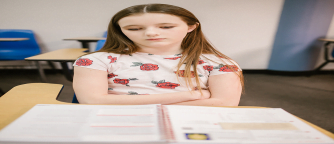Well not exactly perfect, but much, much better
In this episode, we get into the topic of restorative practices. The International Institute of Restorative Practices website describes restorative practices as an emphasis on repairing the harm done to people and relationships rather than only punishing offenders (Zehr, 1990). This idea is really nothing new. Restorative practices have been around long before we gave it this name. Early nomadic societies used this type of mediation to reconcile discord among the group.
Time for a Little Face-to-Face
In 1974 a Canadian probation officer brought this type of group mediation back to the forefront when he had vandalism offenders and their victims talk together. This became the victim-offender reconciliation program. Today this would be called restorative justice, as the reconciliation took place after the crime was committed. Today’s restorative practices stem from this early program. Restorative justice Is not the same thing as restorative practices. Justice happens after an incident has already taken place, but practices aim to prevent problems from escalating in the first place. The school should incorporate these practices from the beginning. This can prevent problems from escalating to where restorative justice practices are necessary.
Today, discussions replace punishment and suspensions. Offenders must bear witness to the way their actions affected their victims. Group leaders help those in their community talk it out. Once again what was old is new again.
Introductions Count
Our guest, Heather, an Orange County middle school principal, shares her insight on how she brought restorative practices to her school. She explains how she got her staff on board by using a gradual introduction to restorative practices, instead of a “this is what we’re gonna do and you better do it” kind of play.
So many times teachers are the victims of the latest and greatest new fangled pedagogy that https://transparencyinteaching.com/wp-content/uploads/2023/07/joshua-hoehne-wWkCAnmFF20-unsplash-1-526×296-1.jpeg throws at them. This often happens without the proper training, time for adaptation, and learning the required skills that ensure a reasonable chance for success. How one introduces this and sets implementation expectations for one’s staff is crucial.
What’s a Teacher to do??
Later, Anne shares a story about a Florida of a middle school student who was arrested for not saying the Pledge of Allegiance. Heather gives her analysis of what the substitute teacher and RSO could have done differently to resolve this situation resulting in a more positive learning experience for all involved.
Experienced teachers know confrontation with a student or even a challenging class full of kids, is inevitable. Teachers who have the skills to deal with these situations will make it. Those that don’t will quit. And, we don’t need students to quit either — physically or mentally. Restorative practices can help keep kids in class and keep teachers there, too.
Click here for links to the resources used in this episode







